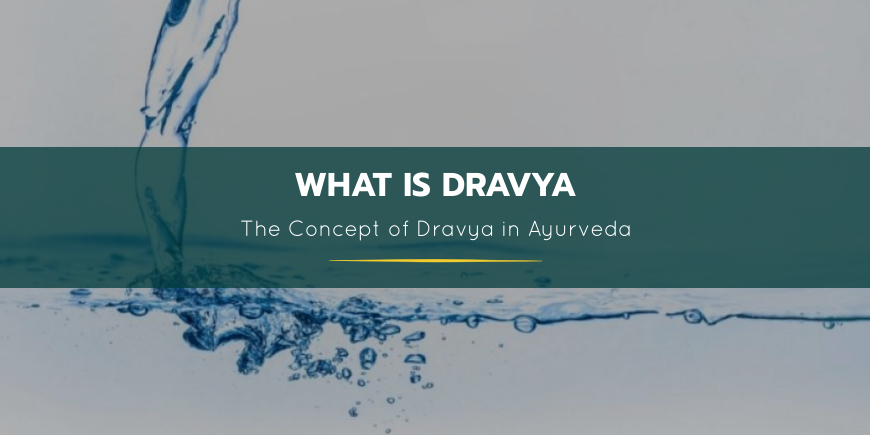
Introduction
Before understanding the properties of herbs according to Ayurveda, we need to understand a bit of Vedic physics. Vedic physics starts with subtler entities than the atom. It starts with “padarth”.
The Sanskrit word padarth (pad – words, arth – meaning/matter) means “something that can be named”. This is a very beautiful meaning that refers to the spiritual roots of Vedic text. Because we can name most things. However, some entities cannot be trapped in words. For example, Vedas has a description of the supreme truth/soul – neti neti (no no); because this is all we can say about it. Is the supreme soul visible – no, it is invisible – no, it is kind – no, cruel – no…..because it is beyond words. So, here is the first division of entities
Non-padarth – unnamed / unnameable (X factor)
Padarth – Everything that can be named/defined in words
Let’s talk about padarth. We can also call it substance or entity for convenience. In Sanskrit, wisdom or realization is called “prama.” And the subject of wisdom or realization is padarth or the substance. The sensation of the material world starts with padarth.
And the physical world itself starts with Dravya.
Summary
Everything starts with padarth (something that can be named). Beyond padarth is the unnameable energy. This physical world starts with Dravya.
What is Dravya?
This Sanskrit word means the abode of guna (properties) and karma (action). Dravya means an entity that has specific qualities and acts in a specific manner. These distinct properties and modes of action make a Dravya unique or distinguishable.
Here starts the physical world, with a total of nine elementary Dravyas. These are
- Prithvi (Mass)
- Jal (Adhesive forces)
- Agni (Heat)
- Vayu (Kinetic energy)
- Akash (Space)
- Kaal (Time)
- Disha (Direction)
- Atma (Soul)
- Man (Mind)
These nine foundational elements or Dravyas are the very basis of everything that exists around us.
Summary
There are nine types of Dravya or basic substances – soul, mind, time, direction, and the great five elements. These are the basis for the material existence of all entities.
Special Properties of Dravya
A Dravya has some special qualities –
Ultimate individuality
These Dravyas are like elements in the periodic table. The unique characteristics like atomic mass and atomic weight set each element apart from other elements. However, in the case of elements, we are considering only weight or mass. Ayurveda talks about 20 different parameters to judge a substance. These differentiating qualities are called guna.
Independent existence
Dravya has a stable and independent existence. For example, according to Vedic genesis, the air elements give birth to the fire element. But both the air and fire elements are independent of each other’s existence. They are like a mother and a child. After the child is born, the mother and the child have an independent existence.
Eternal existence
Vedas believe that each universe has an expiry date. And it follows a natural cycle of creation, sustenance, and destruction. But once the universe comes into existence, all Dravyas or the basic elements are eternal. They stay as long as the universe stays.
This thought reflects the basic law of energy – energy is neither created nor destroyed. It changes from one form to the other. Let us take the example of a painted canvas. Once the canvas is painted, the color strokes stay until the canvas itself is torn.
Summary
The basic matter (Dravya) has three fundamental properties – Ultimate individuality, Independent existence, Eternal existence.
Dravya as the basis of creation
All these fundamental elements (Dravya) come together to form life. Atma or the soul stirs the prakrati or nature. With the three gunas, satva (element of balance), rajas (element of activity), and tamas (element of darkness/dullness), Atma forms a unique mana (mind). This mind manifests itself in the dimensions of time and direction with the help of panchmahabhuta. The panchmahabhuta or the five basic elements create the physical body.
This body is the tool for the mind. And the mind is the tool for atma to realize the truth.

Panchmahabhuta
Modern science classifies elements based on their atomic structure, their chemical affinities, and similar factors. However, the Vedic classification of substances is starkly different from modern science.
Any physical entity contains the five basic elements – space (akash), air (vayu), fire (agni), Jal (water), and 1. Prithvi (earth).
The fundamental factors of Ayurveda like panchmahabhuta (the five elements), are subtle and are sometimes difficult to understand. However, their simplicity is deceiving and makes them hard to understand. Everything in the world is made up of 5 elements. These 5 elements are the foundation of the entire physical world as we can feel it. These 5 elements include:
- Akash (space element)
- Vayu (energy)
- Agni (heat)
- Jala (fluid)
- Prithvi (matter)
These elements are supposed to evolve one from the other. For example, Akash (space) gives rise to Vayu (energy), Vayu produces Agni (heat), Agni produces Jala (fluids) and Jala (fluids) produces Prithvi (matter).
If we look at the formation of these elements, it provides a logical pattern of evolution. Nothing can exist without space; therefore, it is the first element. Space can contain energy. Energy can manifest itself in the form of heat, a kind of energy. Heat energy travels in the form of waves via radiation in space. Heat either melts or produces smoke, both are fluids. The fluids condense to finally give rise to solid matter, like the earth.
Accordingly, the basic classification of matter in Ayurveda has based dominance on these five elements. Therefore, there are five types of substances –
- Akashiya – with the dominance of the space element
For example, the space, or a cotton ball. A cotton ball is full of space with very little density.
- Vayviya – with the dominance of the air element
Example – The wind is an entity with all the properties of the air element
- Agneya – with the dominance of the fire element
Example – Physical Fire
- Jaliya – with the dominance of the water element
Example –Physical water
- Parthiva – with the dominance of the earth element
Example – Physical earth
These elements produce the doshas (physiological systems) in the body. All five elements are present in anything that has a physical manifestation on earth.
Akash and Vayu are dominant in the VataDosha.
Agni is dominant in the pittadosha
Jala and Prithvi are dominant in the KaphaDosha.
Take Away
Dravya (matter) has nine types – soul, mind, direction, time, and the five great elements. These forms of matter come together to create the entire universe, including the living beings. These substances exist as independent unique entities.
They may differ from one another. For example, the air element emerges from space, and it creates a fire element. But the space, air, and fire elements are distinct and have an independent existence.
Besides, they are the integral elements of the universe and have an eternal existence. They exist in every universe ever formed!
Dive into the world of holistic healing and embark on a transformative journey towards wellness with our Ayurveda Certification Course! Immerse yourself in the ancient wisdom of Ayurveda and gain the knowledge and skills to restore balance and harmony in the body and mind. Join us today and unlock the secrets to optimal health and well-being.
Responses